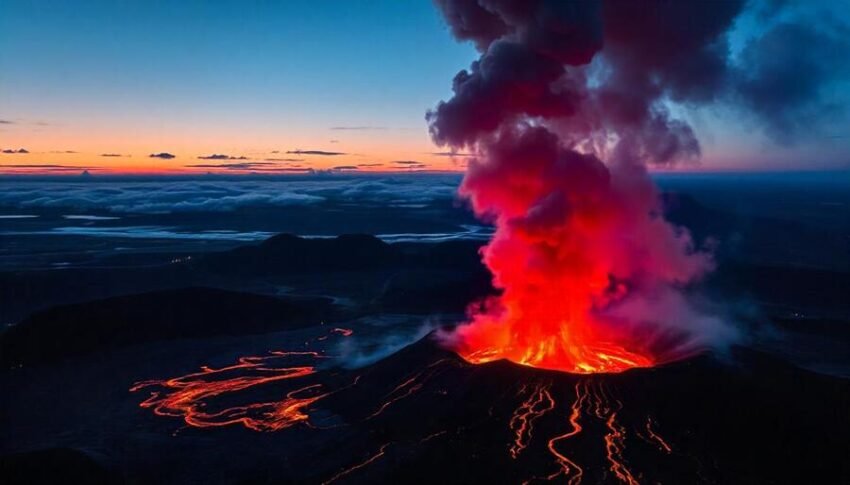
A massive volcanic eruption has sent molten lava flowing through a 3-kilometre-long fissure on Iceland’s Reykjanes Peninsula. The eruption, which began suddenly at 11:14 pm on Wednesday, marks the seventh volcanic event in the area since December.
The Sundhnúkur fissure has taken center stage, but geologists say this eruption is smaller than the one in August. The Icelandic Meteorological Office reports that the fissure has stopped expanding and does not show signs of increasing activity. However, the situation remains unpredictable.
Blue Lagoon Evacuated, Grindavík Residents Relocated
The eruption has forced immediate evacuations. Visitors at the Blue Lagoon, Iceland’s iconic geothermal spa, had to leave swiftly. The attraction remains closed as safety is reassessed, and management is contacting guests with bookings to offer changes or refunds.
In Grindavík, a town of 3,800 people located just a few kilometers from the eruption, the story is more severe. Residents had to evacuate for their safety—many for the second time this year. Earlier, in December, earthquakes and large ground cracks in the area already pushed people out of their homes.
What About Travel?
Despite the eruption, Keflavik International Airport (KEF), Iceland’s main hub for international travel, is open. Flights continue to arrive and depart as scheduled, with no cancellations so far. The airport’s operator, ISAVIA, encourages passengers to monitor flight updates but assures travelers they are prepared for volcanic events.
Two key airlines, Icelandair and PLAY Airlines, use KEF as their hub. Both carriers continue to operate flights to and from the airport without disruption.
Even with Iceland’s volcanic activity, the country remains a safe destination for visitors. Authorities recommend avoiding the Grindavík area and any other restricted zones. The Icelandic Met Office and Safe Travel Iceland offer real-time updates to keep visitors informed.
Iceland’s Resilience Shines Through
Icelanders are no strangers to volcanic eruptions. On average, the country experiences one every five years. Thanks to extensive planning, early warning systems, and experienced scientists, Iceland is well-prepared to handle such events. This preparation ensures that disruptions to travel and daily life stay minimal.
Your Questions Answered
- Is Iceland safe to visit right now?
Absolutely. Iceland’s authorities are managing the situation effectively. As long as you avoid restricted areas and stay informed, your trip can go ahead as planned. - Is the Blue Lagoon open?
Not yet. The spa is closed until further notice, but updates will follow soon. Guests with reservations can reschedule or cancel on the Blue Lagoon’s website. - Will flights to Iceland be disrupted?
No. Keflavik International Airport is running normally, and there’s been no impact on flights. - What airlines operate out of Keflavik?
Icelandair and PLAY Airlines both use Keflavik International Airport as their hub, offering flights to destinations across Europe, North America, and beyond. - What’s different about this eruption?
Unlike the infamous Eyjafjallajökull eruption of 2010, which grounded flights due to ash clouds, this event has caused no significant air traffic issues. Geologists are monitoring closely, but so far, it’s contained.
Volcanic eruptions are a part of Iceland’s dynamic nature. While they can disrupt daily life, they also remind us of the island’s raw and breathtaking beauty. If you’re planning a trip to Iceland, stay informed, follow local advice, and you’ll still be able to enjoy this unique destination safely.
The post Is Iceland Still Safe for Travelers and Are Your Flights Affected Amid the Latest Sundhnúkur Volcano Eruption? appeared first on Travel And Tour World.

